To find these selections and many other new titles, see the NMC library catalog.
New Non-Fiction
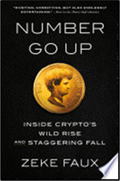 Number Go Up: Inside Crypto’s Wild Rise and Staggering Fall by Zeke Faux
Number Go Up: Inside Crypto’s Wild Rise and Staggering Fall by Zeke Faux
In 2021 cryptocurrency went mainstream. Giant investment funds were buying it, celebrities like Tom Brady endorsed it, and TV ads hailed it as the future of money. Hardly anyone knew how it worked-but why bother with the particulars when everyone was making a fortune from Dogecoin, Shiba Inu, or some other bizarrely named “digital asset”? As he observed this frenzy, investigative reporter Zeke Faux had a nagging question: Was it all just a confidence game of epic proportions? What started as curiosity-with a dash of FOMO-would morph into a two-year, globe-spanning quest to understand the wizards behind the world’s new financial machinery.
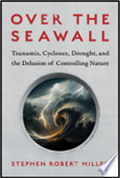 Over the Seawall: Tsunamis, Cyclones, Drought, and the Delusion of Controlling Nature by Stephen Robert Miller
Over the Seawall: Tsunamis, Cyclones, Drought, and the Delusion of Controlling Nature by Stephen Robert Miller
As extreme weather becomes more common, the urge to outwit nature can be irresistible. But when our expensive technosolutions backfire, are we worse off than before? How should we adapt to a changing climate? Miller reveals the unintended consequences of bad adaptations or as academics call it, maladaptations–fixes that do more harm than good. From seawalls in coastal Japan, to the reengineered waters in the Ganges River Delta, to the artificial ribbon of water supporting both farms and urban centers in parched Arizona, the author traces the histories of engineering marvels that were once deemed too smart and too big to fail.
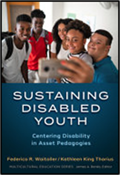 Sustaining Disabled Youth: Centering Disability in Asset Pedagogies edited by Frederico R. Waitoller, Kathleen A. King Thorius
Sustaining Disabled Youth: Centering Disability in Asset Pedagogies edited by Frederico R. Waitoller, Kathleen A. King Thorius
This is the first book to bring disability into conversation with asset-based pedagogies as well as bring together the work of prominent and emerging university and community scholars in disability studies, and those who have made direct and indirect contributions to asset-based pedagogies. The book centers on how disability intersects with other markers of difference to create unique cultural repertoires to be valued, sustained, and utilized for learning.
 Flying Green: On the Frontiers of New Aviation by Christopher de Bellaigue
Flying Green: On the Frontiers of New Aviation by Christopher de Bellaigue
A new generation of travelers are eager to see innovation that will alleviate their guilt about flying, and they want to know where the industry is, how seriously they’re taking climate change, and what the future looks like. This is the story of the search for a way to fly green.
 It’s All About the Land: Collected Talks and Interviews on Indigenous Resurgence by Taiaiake Alfred
It’s All About the Land: Collected Talks and Interviews on Indigenous Resurgence by Taiaiake Alfred
Illuminating the First Nations struggles against the Canadian state, this book exposes how racism underpins and shapes Indigenous-settler relationships. Renowned Kahnawà:ke Mohawk activist and scholar Taiaiake Alfred explains how the Canadian government’s reconciliation agenda is a new form of colonization that is also guaranteed to fail. Bringing together Alfred’s speeches and interviews from over the past two decades, the book shows that Indigenous peoples across the world face a stark choice: reconnect with their authentic cultures and values or continue following a slow road to annihilation.
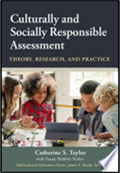 Culturally and Socially Responsible Assessment: Theory, Research, and Practice by Catherine Taylor with Susan B. Nolen
Culturally and Socially Responsible Assessment: Theory, Research, and Practice by Catherine Taylor with Susan B. Nolen
This book addresses a problem that affects the work of all educators: how traditional methods of assessment undermine the capacity of schools to serve students with diverse cultural and social backgrounds and identities. Anchored in a commonsense notion of validity, this book explains how existing K-12 assessment practices are grounded in the language, experiences, and values of the dominant white culture. It presents a timely review of research on bias in classroom and large-scale assessments, as well as research on how students’ level of engagement influences their performances.
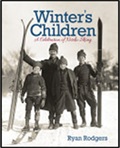 Winter’s Children: A Celebration of Nordic Skiing by Ryan Rodgers
Winter’s Children: A Celebration of Nordic Skiing by Ryan Rodgers
In the winter of 1841, a Norwegian immigrant in Wisconsin strapped on a pair of wooden boards and set off across the snow to buy flour–leaving tracks that perplexed his neighbors and marked the arrival of Nordic skiing in America. To this day, the Midwest is the nation’s epicenter of cross-country skiing, sporting a history as replete with athleticism and competitive spirit as it is steeped in old-world lore and cold-world practicality. This history unfolds in full for the first time in this book.
New Fiction
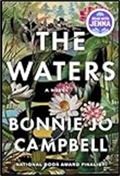 The Waters by Bonnie Jo Campbell
The Waters by Bonnie Jo Campbell
On an island in the Great Massasauga Swamp―an area known as “The Waters” to the residents of nearby Whiteheart, Michigan―herbalist and eccentric Hermine “Herself” Zook has healed the local women of their ailments for generations. As stubborn as her tonics are powerful, Herself inspires reverence and fear in the people of Whiteheart, and even in her own three estranged daughters. With a “ruthless and precise eye for the details of the physical world” (Jane Smiley, New York Times Book Review), Bonnie Jo Campbell presents an elegant antidote to the dark side of masculinity, celebrating the resilience of nature and the brutality and sweetness of rural life.
 We Solve Murders by Richard Osman
We Solve Murders by Richard Osman
Steve Wheeler is enjoying retired life. He still does the odd bit of investigation work, but he prefers his familiar routines: the pub quiz, his favorite bench, his cat waiting for him at home. His days of adventure are over. Adrenaline is daughter-in-law Amy’s job now. Amy Wheeler thinks adrenaline is good for the soul. Working in private security, every day is dangerous. She’s currently on a remote island protecting mega-bestselling author Rosie D’Antonio, until a dead body and a bag of money mean trouble in paradise. So she sends an SOS to the only person she trusts . . .As a thrilling race around the world begins, can Amy and Steve outrun and outsmart a killer?
 The Blue Hour by Paula Hawkins
The Blue Hour by Paula Hawkins
Welcome to Eris: an island with only one house, one inhabitant, one way out. Unreachable from the Scottish mainland for twelve hours each day. Once home to Vanessa: A famous artist whose notoriously unfaithful husband disappeared twenty years ago. Now home to Grace: A solitary creature of the tides, content in her own isolation. But when a shocking discovery is made in an art gallery far away in London, a visitor comes calling. And the secrets of Eris threaten to emerge….A masterful novel that is as page-turning as it is unsettling, this book recalls the sophisticated suspense of Shirley Jackson and Patricia Highsmith and cements Hawkins’s place among the very best of our most nuanced and stylish storytellers.
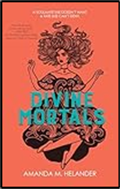 Divine Mortals by Amanda M. Helander
Divine Mortals by Amanda M. Helander
Blessed by the gods, Mona Arnett has the unique ability to name divine soulmates, but she refuses to seek out her own—until she learns the king is dying without an heir, threatening the royal line and the world’s access to magic. Tasked with naming his future queen, Mona discovers the king’s soulmate is . . . her. A royal match is the last thing Mona wants—especially when she starts falling for the king’s closest advisor—so she lies, cheats, and contends with scheming gods to hide the truth. But when this high-stakes game of thrones leads to murder, survival and the fate of the kingdom will depend on her finding the courage to face her destiny.
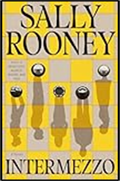 Intermezzo by Sally Rooney
Intermezzo by Sally Rooney
Aside from the fact that they are brothers, Peter and Ivan Koubek seem to have little in common. Peter is a Dublin lawyer in his thirties―successful, competent, and apparently unassailable. But in the wake of their father’s death, he’s medicating himself to sleep and struggling to manage his relationships with two very different women. Ivan is a twenty-two-year-old competitive chess player. He has always seen himself as socially awkward, a loner, the antithesis of his glib elder brother. For two grieving brothers and the people they love, this is a new interlude―a period of desire, despair, and possibility; a chance to find out how much one life might hold inside itself without breaking.
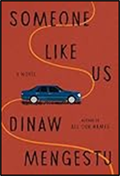 Someone Like Us by Dinaw Mengestu
Someone Like Us by Dinaw Mengestu
After abandoning his once-promising career as a journalist in search of a new life in Paris, Mamush meets Hannah—a photographer whose way of seeing the world shows him the possibility of finding not only love but family. Now, five years later, with his marriage to Hannah on the verge of collapse, he returns to the close-knit immigrant Ethiopian community of Washington, DC, that defined his childhood. At its center is Mamush’s stoic, implacable mother, and Samuel, the larger-than-life father figure whose ceaseless charm and humor have always served as a cover for a harder, more troubling truth. But on the same day that Mamush arrives home in Washington, Samuel is found dead in his garage.
Summaries and images adapted from publishers.
